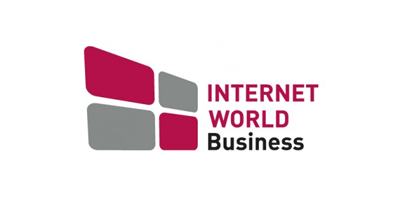Success factors for user centricity in companies
Many companies claim that they put their users first. In reality, however, this is just lip service. Nothing has changed in terms of internal structures and mindsets. In my customer journey management workshops, I have seen time and again how quickly good intentions are forgotten. In this article I describe the prerequisites that need to be in place in order to establish user centricity in an organization.
Contents
What Makes True User Centricity Difficult
User Centricity is one of the marketing trends and it is probably one of the biggest challenges for companies to become user centric. True user centricity starts at the core of the business and permeates the entire organization in terms of structures, departments, and people, which is what makes a transformation process to true user centricity so difficult.
Most organizations are built and structured from an internal perspective. With increasing corporate affiliation, many employees prefer to preserve rather than change.
Organizations are often managed hierarchically and organized by department. This simplifies the overview, cost center accounting, budget allocation and controlling. However, such a structure is not really user-centric because it was not designed with the user in mind, but based on internal needs.
Modern business structures are user-centric, not business-centric.
Over the past 7 years, I have helped nearly 30 companies put the user at the center of the business with our Customer Journey Management workshops.
In the workshops, we bring together employees from all market-facing departments such as marketing, UX, online marketing, PR, service, support, product management and sales. Every single one of these employees is responsible for shaping the user’s touchpoints with the company, thereby shaping image and performance in equal measure.
In these workshops, I notice again and again that the need for more user centricity is recognized by most of those involved and that the motivation to establish more user centricity in the company is high.
In most cases, the implementation of the results from our customer journey management workshops fails due to the lack of a user-centered corporate structure and a preservationist mindset in the upper management levels. After the workshop, the participants disappear back into their departmental silos and get lost in day-to-day business.
This often means that a great opportunity to make the company more future-proof is lost. In my opinion, companies that focus more on themselves than on the user will have major problems in the future.
But why do a few companies succeed in establishing and living user centricity, while many fail?
I have been thinking about this over the last few years, particularly based on the impressions from our workshops, and have put forward the following theses:
Systems that require control and are designed to preserve stifle development and true user-centricity.
Markets are dynamic, and the needs of users, such as potential or existing customers, change quickly and frequently. This evolution is accelerated by digitalization and the speed of innovation.
Many organizations are overwhelmed by this and focus too much on preserving what they already have.
What Influences the Mindset of Employees?
Systems are ultimately shaped by the mindset of each individual in the organization. The mindset towards user-centricity and change is largely determined by the following factors
- Employee personality: A person’s personal disposition determines whether he or she is more security-conscious or risk-taking, and therefore more comfortable with change. The ability to empathize also plays an important role in developing a genuine interest in the user.
- Salary level: I often find that highly paid employees stay with the company despite frustration and dissatisfaction with their jobs, managing more than they create. The fear of losing the generous salary is greater than the desire to change.
- Length of time in position and company: The longer you stay in a position at a company, the greater the risk that you will become too accustomed to the security of the status quo and want to preserve it.
- Error culture in the company: When you try out new things, mistakes happen more often than when you follow familiar, established routines. If mistakes are punished, this leads to a safety-oriented mindset, which often slows down developments.
- Communication and behavior of superiors: A system is significantly shaped by the behavior of management positions. The employees are guided by you. If superiors tend to shine through a lot of theoretical blah-blah and a lack of commitment to implementation, employees will orientate themselves accordingly and user-centricity will remain a meaningless buzzword.
How companies attract user-centered employees
In today’s employee market, many employees are primarily interested in contributing to a meaningful purpose of the company. Employees with a user-centered mindset look for companies or systems in which their mindset can be lived.
The following factors should be in place in order to attract and retain such people:
- Interdisciplinary and collaborative structures: True user-centeredness needs appropriate structures to bring the theory to life. If there is no interdisciplinary exchange and collaboration, it will be difficult to think outside the box and the design of user-oriented touchpoints will not be successful.
- Interface positions: Interfaces and formats are required that enable interaction between departments and disciplines. I addressed this topic in my article Marketing, we have a problem! Dedicated to silos and missing interfaces.
- Common cross-departmental company goals as a requirement: I am not a fan of department-oriented goals and compensation models. These requirements promote silo mentality because departmental goals take precedence over company goals. User-centricity is nipped in the bud because employees and departments only focus on themselves.
- Genuine interest in the user or customer: I am always shocked at how little companies know about their (potential) customers. In many companies, interest in users is limited to their purchasing power. There is no real interest in the user. A user-centric company is constantly learning more about the needs of users and customers, capturing these insights and making them available across the company.
- Building a user-centered structure right from the start: Ideally, companies are structured and built in a user-centered way from the start. This means there is a user-centered mindset right from the start and complex change processes, termination and adjustments are not necessary. You attract employees with a user-centered mindset right from the start.
- User-centered and digital mindset in C-level and middle management: The fish stinks from the head. That also applies here. Companies are built and shaped by the commitment, mindset and support of top management. These people serve as role models for all other units in an organization. If these people only care about money, employees will only care about money, but not about the user/customer. If the C-level and middle management move forward courageously and consistently, those who are interested in real user-centricity will go along, the rest will exchange ideas. Openness to digitalization goes hand in hand with user-centricity.
- The company is young and is still being developed: In my experience, the age of a company plays a role in how easily a transformation to true user-centeredness succeeds. In companies that are more than 15 to 20 years old, you often notice a well-established system that needs to be maintained in various parts of the company. These companies come from a time when transformation and agility were not necessary. There was no need for true user-centricity on either the customer or labor market sides. Young companies are more familiar with the dynamics of the markets and are also better positioned with regard to digitalization.
- Flat and/or product-oriented hierarchies: As already mentioned, the structures of a company are crucial for true user focus. The less it is about control and budget distribution, the more you can concentrate on the user. In such structures, you are less likely to get caught up in budget defense battles because every part of the company is about the user or at least the product.
Final word
I hope that in the future we will see many more companies that position themselves in a user-centered manner and break down silos or at least make them more permeable. This is not only good for users and customers, but also for all other stakeholders in a company.
I would even go so far as to say that working in and on such organizations could have a social impact on how we live together in the future.
- The dimensions of the Google ranking - 25. April 2024
- Interesting Google patents for search and SEO in 2024 - 3. April 2024
- What is the Google Shopping Graph and how does it work? - 27. February 2024
- “Google doesn’t like AI content!” Myth or truth? - 19. February 2024
- Most interesting Google Patents for semantic search - 12. February 2024
- How does Google search (ranking) may be working today - 4. February 2024
- Success factors for user centricity in companies - 28. January 2024
- Social media has become one of the most important gatekeepers for content - 28. January 2024
- E-E-A-T: Google ressources, patents and scientific papers - 24. January 2024
- Patents and research papers for deep learning & ranking by Marc Najork - 21. January 2024






















